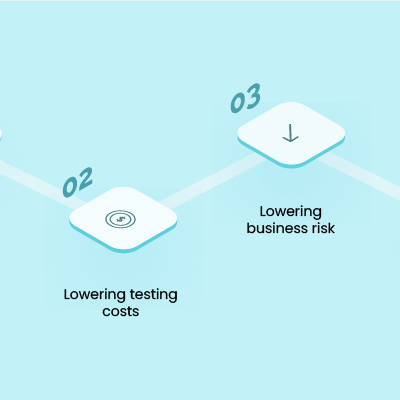User engagement is a critical aspect of website design services as it determines the level of user involvement and interaction with your website. Engaged users are more likely to spend time on your website, return to it, and even recommend it to others. Designing for user engagement involves creating an intuitive user interface, incorporating interactive design elements, personalization features, and valuable content, building a strong brand identity, encouraging user feedback, and measuring user engagement metrics. Prioritizing user engagement in website design can lead to increased traffic, improved user satisfaction, and ultimately, better business outcomes.
Understanding Your Target Audience
To design a website that engages your audience, you must first understand your target audience. This involves researching and analyzing their demographics, interests, behaviors, and preferences. Knowing your audience’s needs and expectations allows you to tailor your website’s design to meet those needs and provide a personalized user experience. For example, if your target audience is tech-savvy, incorporating cutting-edge design elements may enhance engagement. On the other hand, if your audience is primarily older adults, a simpler interface may be more effective. Understanding your target audience is a crucial first step in designing a website that resonates with users and keeps them coming back.
Creating an Intuitive User Interface
An intuitive user interface is a key element in designing a website that engages users. It means designing a website that is easy to navigate, has clear and concise labels, and enables users to find what they are looking for quickly. An intuitive interface should also be visually appealing and provide a seamless user experience. This involves considering factors such as font size, color schemes, and whitespace. A well-designed interface can improve user engagement by reducing frustration and confusion, making users more likely to spend time on your website and return to it in the future.
Enhancing User Experience with Interactive Design Elements
Incorporating interactive design elements can enhance the user experience and improve engagement on your website. These elements include animations, videos, quizzes, games, and other interactive features that encourage users to engage with your content. Interactive design elements can make your website more visually appealing, immersive, and fun to use. They can also increase user retention and encourage social sharing, as users are more likely to share engaging content with their friends and followers. By incorporating interactive design elements into your website, you can improve user engagement and create a memorable user experience that keeps users coming back.
The Role of Visual Design in User Engagement
Visual design plays a crucial role in user engagement as it directly impacts the aesthetic appeal and usability of your website. A well-designed website should have a consistent visual style that reflects your brand identity and appeals to your target audience. This involves considering factors such as color schemes, typography, imagery, and whitespace. An effective visual design can also improve website navigation, making it easier for users to find what they’re looking for. Visual design should be incorporated throughout the website, including the homepage, landing pages, and individual pages. A visually appealing website can enhance user engagement and create a positive user experience.
Implementing Personalization Features
Implementing personalization features can boost user engagement by tailoring the user experience to the individual needs and preferences of your users. Personalization features can include personalized content, recommendations, and notifications based on user behavior, location, or other factors. By providing personalized content, users are more likely to spend time on your website, engage with your brand, and return to it in the future. Personalization features also help to build customer loyalty by creating a sense of familiarity and connection between the user and your brand. By implementing personalization features, you can increase user engagement, drive conversions, and improve overall business outcomes.
Providing Valuable Content and Information
Providing valuable content and information is a key factor in user engagement on your website. Users visit websites to find information or solutions to their problems, and providing high-quality content that meets their needs can improve engagement and create a positive user experience. Valuable content can include blog posts, articles, tutorials, and other forms of educational content that inform and engage users. By providing valuable content and information, you can establish your website as a trusted source of information and increase user engagement. Users are more likely to return to your website and engage with your brand if they find your content helpful and informative.
Building a Strong Brand Identity
Building a strong brand identity is important in creating a website that engages users. Your brand identity should be reflected in the design of your website, including the color scheme, typography, and imagery. A strong brand identity creates a sense of familiarity and trust between users and your brand. It can also help to differentiate your website from competitors and make your brand more memorable. A strong brand identity can lead to increased user engagement as users feel connected to your brand and are more likely to return to your website.
Encouraging User Feedback and Participation
Encouraging user feedback and participation is essential for creating a website that engages users. By providing users with opportunities to provide feedback and participate in discussions, you can create a sense of community and foster a connection between users and your brand. User feedback can help you improve the user experience by identifying areas of improvement and addressing user concerns. Encouraging user participation, such as through user-generated content or social media campaigns, can also increase user engagement and create a sense of ownership over your brand. By prioritizing user feedback and participation, you can create a website that is tailored to your audience and fosters engagement.
Measuring and Analyzing User Engagement Metrics
Measuring and analyzing user engagement metrics is crucial for improving user engagement on your website. Key metrics to consider include pageviews, bounce rate, time on site, and conversion rate. These metrics can help you understand how users are interacting with your website and identify areas for improvement. By analyzing user engagement metrics, you can identify which pages or features are most engaging to users and optimize your website accordingly. It can also help you track the effectiveness of changes made to improve user engagement. By regularly measuring and analyzing user engagement metrics, you can create a website that is more engaging and better serves the needs of your users.
Key Takeaway
Designing a website for user engagement involves understanding your target audience, creating an intuitive user interface, incorporating interactive website design services elements, enhancing the visual design, implementing personalization features, providing valuable content and information, building a strong brand identity, encouraging user feedback and participation, and measuring and analyzing user engagement metrics. By prioritizing user engagement, you can create a website that resonates with your target audience, keeps users coming back, and ultimately drives business success. Regularly measuring and analyzing user engagement metrics is critical for identifying areas for improvement and ensuring that your website is meeting the needs of your users. READ MORE….




